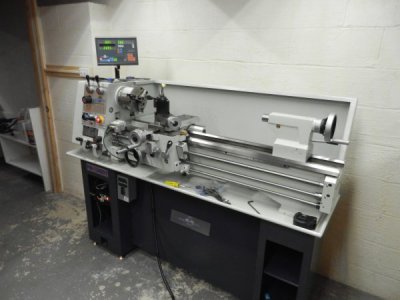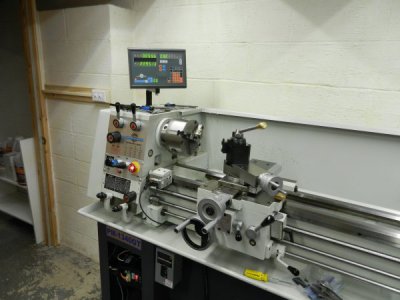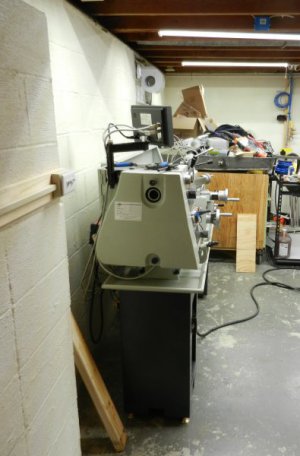- Joined
- Dec 6, 2015
- Messages
- 26
I'm getting ready to take the PM-1340GT apart and make the move into the basement.
I have 5-6 strong friends coming over to help.
I have to make down one flight of stairs into the basement. A few turns on the way there. 90 degree right turn at the bottom of the stairs.
Looking for some advice on how far to take it apart. Obviously, all the easy to remove parts will be removed. The tail stock, Motor, compound and rear shield will be removed. The main part of the lathe will be removed from the stands. So, that would leave just the bed, headstock and carriage. I'm considering removing the carriage, but not sure how involved that is. I'm guessing it weighs like 100 pounds or more. Also considering removing the head as that must be 200+ pounds.
I bought a 2x12 plank to bolt the lathe to and will be mounting about 6-8 eye bolts to connect several straps to. plan is to have 5-6 guys pick up the lathe and once we get to the stairs, we will use the plank to slide it down the stairs.
Open to any pointers.
I have 5-6 strong friends coming over to help.
I have to make down one flight of stairs into the basement. A few turns on the way there. 90 degree right turn at the bottom of the stairs.
Looking for some advice on how far to take it apart. Obviously, all the easy to remove parts will be removed. The tail stock, Motor, compound and rear shield will be removed. The main part of the lathe will be removed from the stands. So, that would leave just the bed, headstock and carriage. I'm considering removing the carriage, but not sure how involved that is. I'm guessing it weighs like 100 pounds or more. Also considering removing the head as that must be 200+ pounds.
I bought a 2x12 plank to bolt the lathe to and will be mounting about 6-8 eye bolts to connect several straps to. plan is to have 5-6 guys pick up the lathe and once we get to the stairs, we will use the plank to slide it down the stairs.
Open to any pointers.




